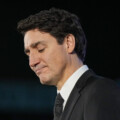According to a recent poll, 42 percent of Canadians agree that socialism is the ideal economic system, as defined by increased government spending and/or a guaranteed annual income. In many ways, the poll responses, particularly from younger people, mirror the arguments made by self-described “social democrats” who believe Canada should be more like Sweden. But there’s one problem—Canadians are highly unlikely to accept Sweden’s taxes.
Simply put, Sweden has a larger government than Canada. According to data from the International Monetary Fund, government spending in Sweden (as a share of the economy) was 46.8 percent compared to 41.5 percent in Canada in 2022, meaning that Sweden’s government sector was almost 13 percent larger than Canada’s (again, relative to the size of the economy).
The challenge for social democrats in Canada is how to pay for this larger government. In Sweden, contrary to rhetoric that the wealthy pay a disproportionate share of taxes, government spending is paid for by much higher taxes on middle-class workers and families.
For example, Sweden’s top personal income tax rate of 52.3 percent is comparable to Canada’s top rate of 53.5 percent, but Sweden’s top rate applies to income starting at roughly US$62,000 compared to Canada’s top rate, which kicks in at almost US$177,000. Clearly, the top personal income tax rate in Sweden applies to many average Swedish workers and families.
Moreover, Sweden’s national sales tax rate (25 percent) is one of the highest in the industrialized world, which again applies to average workers and families. The combined federal GST and provincial sales tax rates in Canada range from 5 percent in Alberta to 15 percent in the four Atlantic provinces. And Sweden also has comparatively high payroll tax rates at 31.4 percent.
The consequence of these three tax policies is clear—average Swedes bear the burden of higher government spending.
Here in Canada, the polling data is also clear—Canadians do not want to pay higher taxes to finance more government spending. In fact, while more than four-in-ten Canadians favour more government spending, only 31 percent are themselves willing to pay higher personal income taxes to pay for it, and even fewer favoured a higher GST (16 percent).
In response to this aversion to higher taxes, governments in Canada, particularly the federal government, have chosen to borrow money to finance more spending. The expansion of existing programs such as the Canada Child Benefit, which provides tax-free cash payments to eligible families with children under 18, and the introduction of new programs such as $10-a-day daycare and national dental care, have been entirely financed by borrowing, meaning future generations will have to pay for these programs.
However, many social democrats in Canada may be surprised to learn that this type of borrowing is not permitted in Sweden. According to Swedish economist Johan Norberg, Swedish government spending is constrained by fiscal rules that the Swedish people strongly support. Specifically, the national government is required to establish spending targets three years in advance that result in a small surplus over the business cycle, thus avoiding debt accumulation over time. Any spending increases must be offset by equivalent spending cuts in other areas to remain within the overall targets. In addition, municipalities and regions are prohibited from running deficits. In other words, the rules in Sweden require current taxpayers to pay for current government spending, which means higher levels of spending require higher taxes.

As noted above, Canadians do not support higher taxes for themselves to pay for more government spending. A 2022 poll found that support for various federal initiatives collapses when accompanied by proposed increases in the GST to pay for them. For instance, when linked with an increase in the GST, support for $10-a-day daycare drops from 69 percent to 36 percent, and support for dental care falls from 72 percent to 42 percent.
Finally, according to the recent poll, most Canadians agree that other Canadians—particularly higher-income workers—should pay more taxes to fund government spending. But further disproportionately taxing high-income earners, along with borrowing to finance current spending, is not sustainable and is certainly not based on the Swedish experience where the middle class bears the burden of higher government spending and fiscal rules prevent the type of borrow-to-spend policies we see in Canada.
All Canadians, including social democrats, should understand the fiscal realities in Canada and beyond when advocating for larger government and increased spending.
Recommended for You

The Week in Polling: Most Canadians want Trudeau to resign; Canadians do not want to become the ’51st state’; and pride in the country drops double digits

Need to Know: Buckle up, we’re in for a wild ride in 2025

Theo Argitis: From a Trump shock to trade shifts to climate realities, here is what will shape Canada’s 2025 economic playbook

Sean Speer: Canada needs to kickstart its cultural policy



